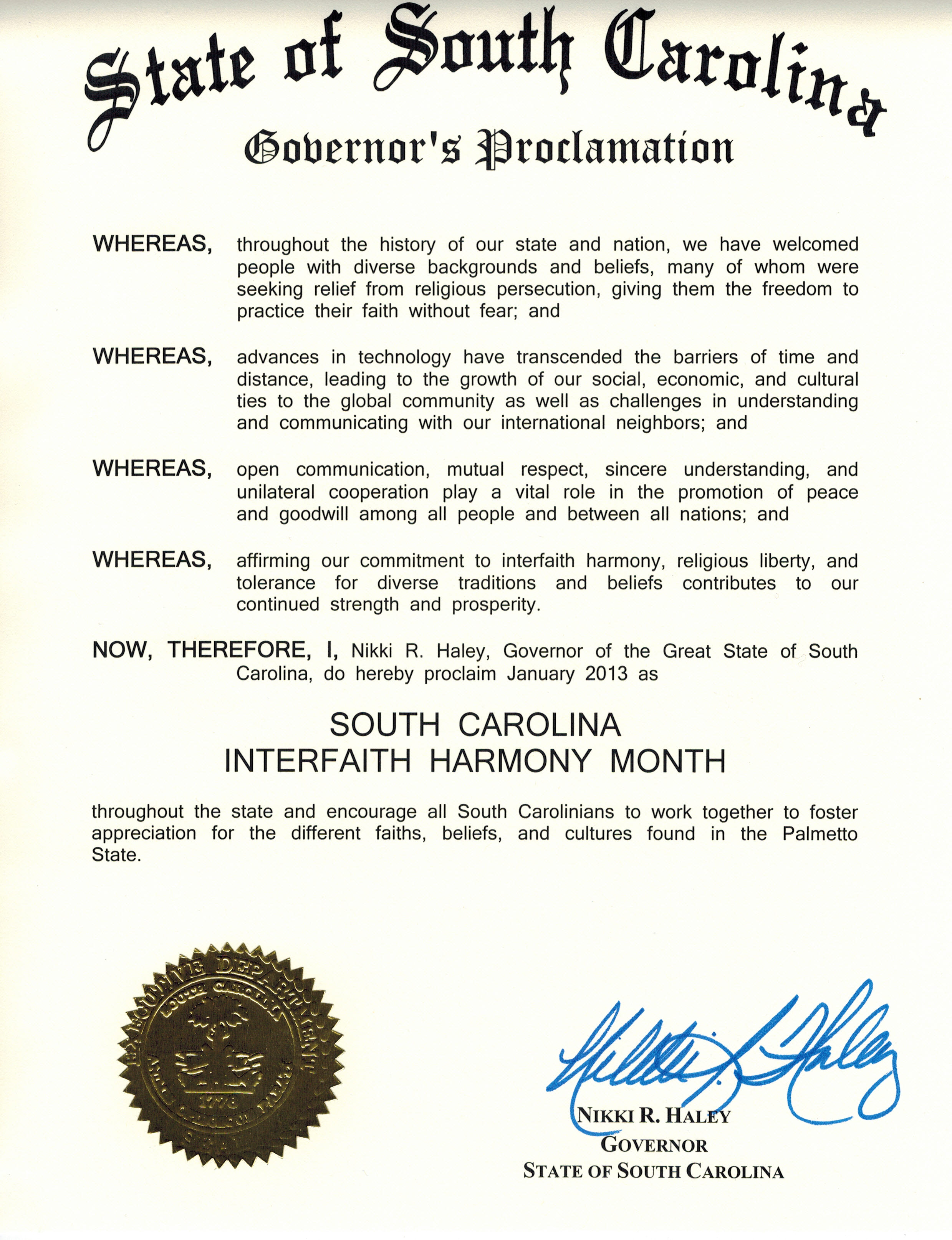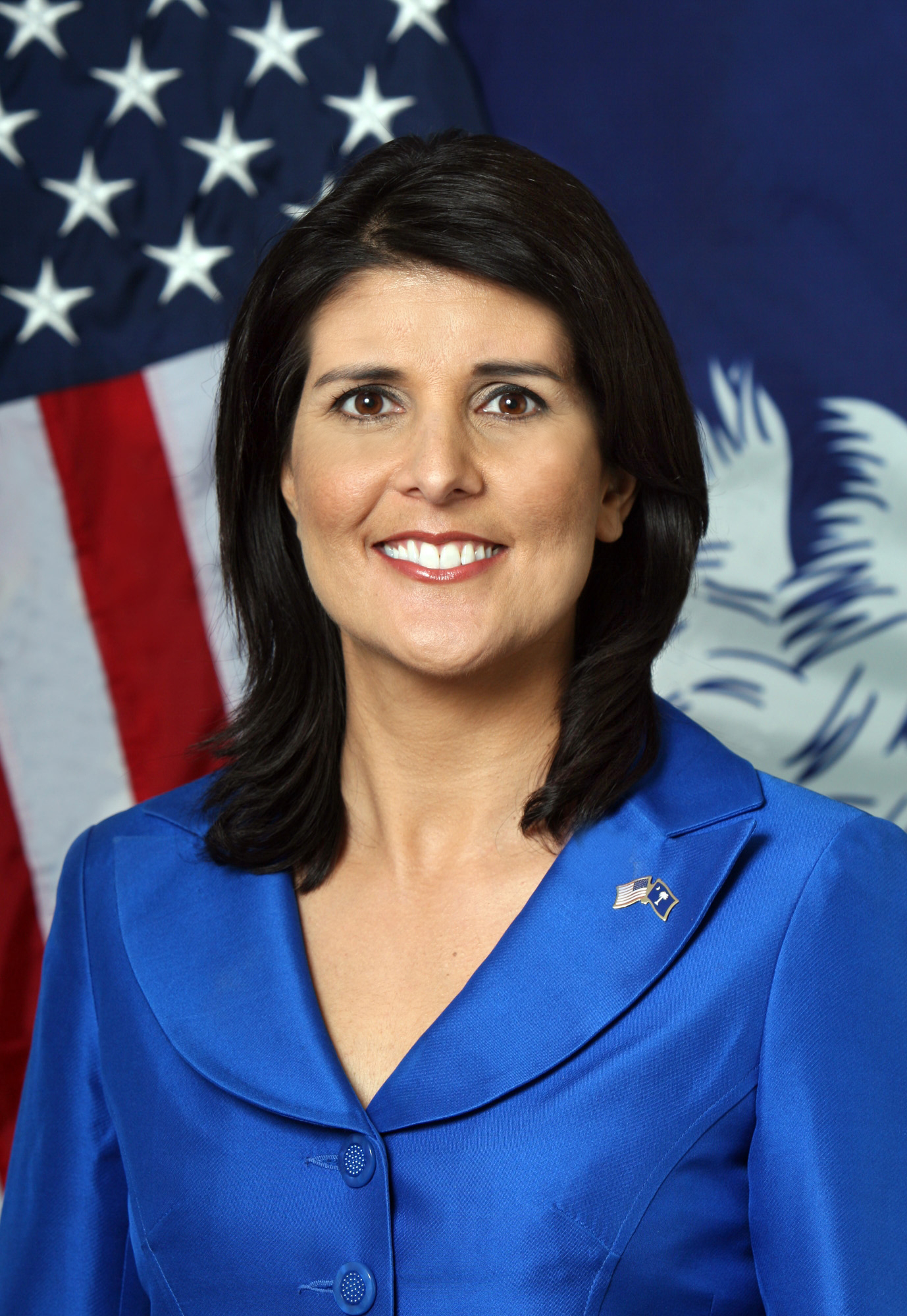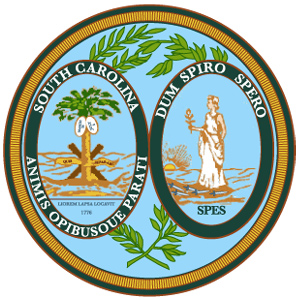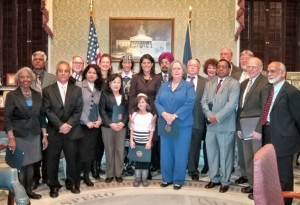“If it can be done in the South, it can be done anywhere….”
A 2012 Gallup poll showed that 7 of the top 10 most religious American states are in the south east. A Pew Forum study expounds on that statistic noting that “The South, by a wide margin, has the heaviest concentration of members of evangelical Protestant churches.” Of these top ten states, South Carolina is number six. Of the estimated of 4,723,723 residents between 72-90% are protestant with up to 50% being evangelical. Informally, South Carolina has the reputation for being the “go to” state for evangelical Baptists. (Pew Forum, “Key Findings on Statistics on Religion in America”)

Commonly-seen South Carolina License Plate
Considering that data mixed with a few assumptions and a pinch of extrapolation, why would any Pagan consider moving to South Carolina? It would appear to be a lonely and potentially hostile place for minority religions. However, America’s religious tapestry has been changing. And, as I recently found out, it’s never too soon to take a closer look “under the hood” and look beyond the numbers.
On January 3, 2013, South Carolina’s Governor, Nikki R. Haley, declared January to be Interfaith Harmony Month.

She invited a state-wide organization called Interfaith Partners of South Carolina to her offices to make the proclamation official and demonstrate support for interfaith work.
The Interfaith Partners of South Carolina, established in 2011, was the vision of Dr. Carl Evans, professor emeritus of University of South Carolina’s Department of Religious Studies. Among its members is Holli S. Emore, Priestess of the Temple of Osirieon and president of Cherry Hill Seminary. Originally, Dr. Evans invited Holli to be a non-voting, “adviser” with her religious-affiliation labeled as “other.” He was uncertain how some of the more conservative members would react to a Pagan presence.
However, it didn’t take long before she corrected her title. And, in the wake of that revelation and the follow-up discussions, Rev. Ed Kosak, a well-respected Charleston Unity minister, made a personal apology to Holli and a public apology to all Pagans at both his Sunday sermons. You can read Holli’s personal account called, Healing in the Bible Belt and Surprise from the Pulpit.

On January 3, Holli was in attendance at the Governor’s proclamation representing Pagans along with the other members of the Interfaith Partners of South Carolina. Holli remarked that the Governor shook her hand and in no way made her feel uncomfortable. Alone, these are remarkable changes for South Carolina’s cultural landscape, but that’s not the end of the story.

Gov. Nikki Haley
Let’s look a bit closer at Gov. Nikki Haley herself. She is the first woman ever to be elected to South Carolina’s chief executive office. And, she is the first Governor of Indian descent; only the second in the nation behind Bobby Jindal of Louisiana, another Southern state.
Getting back to faith, Gov. Haley was raised Sikh in the small South Carolina town of Bamburg. Her New Age-guru sister, Simran Singh, told WISTV reporters in 2010, “the family was forced to move twice due to racial discrimination.” Although now Methodist, Nikki Haley maintains close contact with her father Dr. Ajit Singh Randhawa, who also happens to be the Sikh representative for the Interfaith Partners of South Carolina.
Adding to her multi-cultural background, Gov. Haley recently “appointed Tim Scott, the first African-American to the U.S. Senate from a Southern State since Reconstruction.” (Washington Post, “The Fix”)
Priestess Holli S. Emore is quick to say that she does not agree at all with the Haley’s conservative political agenda. In fact, when the former “Tea Party darling” announced the January Interfaith meeting, Holli did not believe it would ever come to pass. However, the meeting and proclamation have happened, surprising many in South Carolina’s interfaith community. And, it all took place beneath the image of the Roman Goddess of Hope, Spes.

- Seal of South Carolina
It is interesting to note that there were no cameras or reporters of any kind in the meeting room or at the Governor’s offices. Over the last few weeks, there has been little to no media attention on the Governor’s embracing of interfaith communication. Even the Governor’s own news feed does not mention the proclamation except in one place: buried within her posted schedule.
10:30 AM: Gov. Haley proclaimed “South Carolina Interfaith Harmony Month”, Statehouse, Columbia, S.C.
This leads us to speculate on the motivation and reasoning behind Gov. Haley’s decision. Was it a political move? If so, what kind? Or, was it purely personal? I contacted the Governor’s office for a statement but received no response.
While we could speculate all day without getting anywhere, Holli made an excellent point in our interview:
Someone said to me, ‘You know that only a conservative politician could have gotten away with this in such a red state.’ I think she has a good point. A more liberal governor might have avoided openly supporting interfaith work out of fear that they would be pilloried by our mostly-conservative electorate. Even so, I give Haley credit for going out on the limb. As an Indian-American female, she certainly knows about discrimination against minorities, and she said as much during our visit with her.
She’s right. If the more traditionally conservative politicians and public figures embrace interfaith communication, their followers will be more inclined to follow suit. And, if these interfaith talks include Pagans or any other minority faith representatives, awareness, understanding and acceptance will eventually follow right behind. Culture will adapt, gradually and organically, without anyone realizing it’s doing so.

Interfaith Parnters of South Carolina at the Governor’s Office, January 3, 2013
Correction: (per a reader’s comment) All videos and still photos were taken by the private cameras of the people in attendance. There were no official cameras or media.
The Wild Hunt is not responsible for links to external content.
To join a conversation on this post:
Visit our The Wild Hunt subreddit! Point your favorite browser to https://www.reddit.com/r/The_Wild_Hunt_News/, then click “JOIN”. Make sure to click the bell, too, to be notified of new articles posted to our subreddit.
There do appear to have been cameras, as there are pictures and video. My preference would be for government to just stay away from religion. And “interfaith” implies that all religions are based on faith, which isn’t true for most Pagans. However, it’s nice to see some progress.
Apologies. I failed to note that the cameras (video/still) were all the personal devices of those people in attendance.
“Culture will adapt, gradually and organically, without anyone realizing it’s doing so.”
Uh, srsly? One might speak of such adaptation as “gradual” and “organic”, but the claim that such change passes unnoticed is unsupportable.
Explicit inclusion of Pagans, Hindus, Buddhists, and other non-Abrahamic traditions under the umbrella of “religious freedom” has been and will continue to be fought every step of the way.
Yeah, I disagree quite a bit with that quote. The speed at which culture changes isn’t a constant, when it comes to how people within that culture experience it. For some, it’s not fast enough, for others it’s so fast as to be actually terrifying. (I think the root of most fundamentalist following is a broken ability to adapt to cultural change– often coupled with privilege and a sense of loss of power.) The people right in the middle of the mainstream probably don’t realize that it’s doing so, that’s true. The people out further toward both edges damn well notice every minute of it, though.
If Haley had a political motive it probably was to help get the Republican Party out of the demographic corner into which it has painted itself. As a living example of how the GOP can, in fits and starts, include minorities and empower women, she is well positioned to add the third leg of that tripod, acceptance of a spectrum of faiths.
And if it is personal, she might have wanted “her” state to be on the record as fully embracing her Sikh relatives.
Turning to another impressive woman, Holli Emore has evoked some expressions of not just tolerance but humility from prominent Christians. I salute the latter for their spiritual growth but credit Holly with bringing it to pass.
Holli is an amazing woman, Priestess, and leader for Cherry Hill Seminary. I salute her and cheer her on for her efforts. And Heather — thank you! — has pulled together an excellent article out of this occasion.
The word “faith” needs attention here, I think. Yes, it is a big Christian word, short for “faith in Jesus Christ” to do whatever is asked. But it has a much wider application, and letting that one usage make a trademark of it brands the rest of us as outsiders.
Consider this: we all have faith of some sort; that is, faith that the Universe operates and will continue to operate the way we think — and “know” — that it does, including Deity and our relationship(s) with Deity. Basically, we each have faith that our own personal worldview is correct, for all practical purposes. This is why, when we suddenly find out that it wasn’t — when Fate deals us an unexpected and not-understood blow — we experience the trauma that is called a “crisis of faith”. My faith includes The Lady, Goddess, ancient Mother, and I have no problem identifying myself as a person of faith. Maybe not your faith — probably not your faith — but faith, nonetheless.
So, does this event indicate that the reactionary Christianist “Christian Exodus” to South Carolina has ended, or failed?